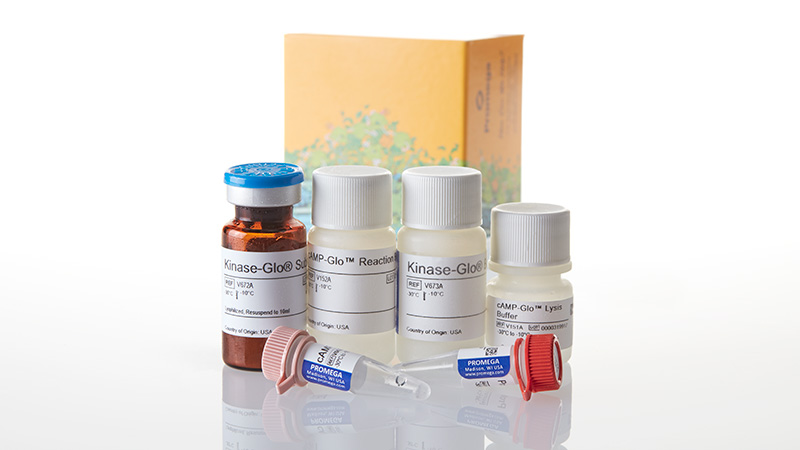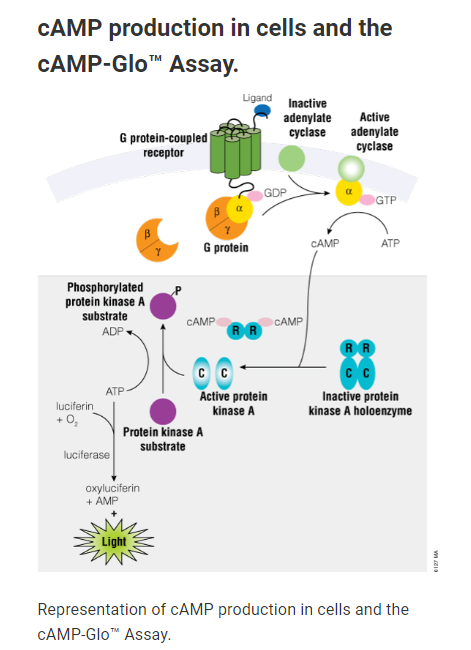 首页>
生物试剂
首页>
生物试剂
The cAMP-Glo™ Assay is designed to monitor cAMP production in response to the effects of test compounds on G protein-coupled receptors (GPCR). GPCRs that couple with adenylate cyclase will increase or decrease intracellular cAMP. The assay is based on the principle that cyclic AMP (cAMP) stimulates protein kinase A (PKA) holoenzyme activity, decreasing available ATP and leading to decreased light production in a coupled luciferase reaction.
The cAMP-Glo™ Assay can be performed in 96-, 384- or 1536-well plates. The cells are induced with a test compound for an appropriate period of time to modulate cAMP levels. After induction, cells are lysed to release cAMP, and then the cAMP detection solution, which contains protein kinase A, is added. Kinase-Glo® Reagent is then added to terminate the PKA reaction and detect the remaining ATP via a luciferase reaction. Plates are read using a microplate-reading luminometer. Luminescence can be correlated to cAMP concentrations using a cAMP standard curve. The half-life for the luminescent signal is greater than 4 hours. This extended signal half-life eliminates the need for luminometers with reagent injectors and allows batch-mode processing of multiple plates.
Cat.# V1501 contains sufficient reagents to perform 300 assays at 60μl final volume per well in 384-well plates.
Cat.# V1502 contains sufficient reagents to perform 3,000 assays at 60μl final volume per well in 384-well plates.
Excellent Signal:Background
The assay provides the best signal:background ratio of all the cAMP assays; signal:background >200 (with cAMP), >15 (on cells).Proven Luminescence Technology
Powered by Ultra-Glo™ Recombinant Luciferase, the bioluminescence-based cAMP-Glo™ assay provides a safe alternative to radioactive methods, and avoids the interference issues that can be problematic for
 会员登录
会员登录.getTime()%>)
 购物车()
购物车()


 成功收藏产品
成功收藏产品